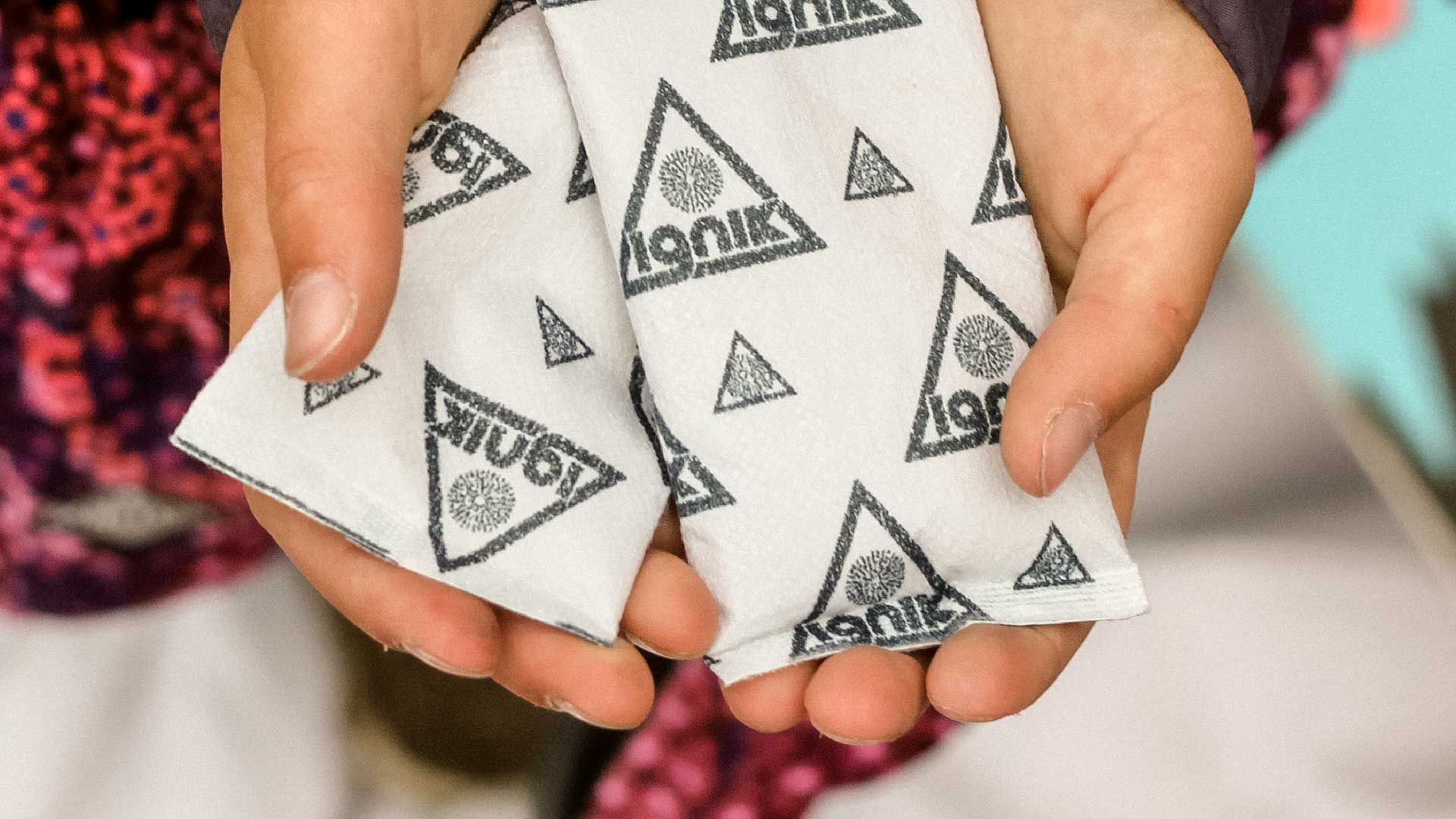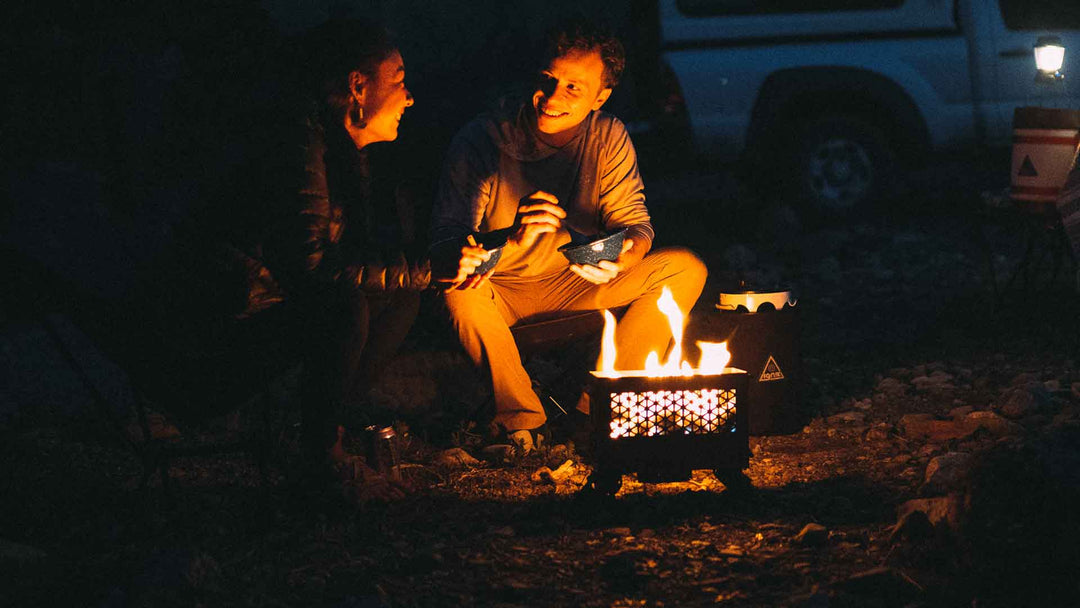How To Stay Warm: 12 Tips For Shoulder Season Camping

The leaves are changing colors, from their deep summer green to bright shades of red, orange and gold. The air is crisp, the nights are cold, and the smell of pumpkin lattes drifts out of neighborhood coffee shops. It must be fall!
While summer is coming to an end, spending time outside doesn’t have to. Camping in the shoulder season (in the fall or spring) can be more challenging but also more rewarding. The weather may be less predictable but you will also find smaller crowds in popular areas, fewer bugs, and plenty of beautiful vistas all to yourself.
To fully enjoy shoulder season adventures, you’ll want to feel confident and prepared for any conditions you may encounter. If you're considering venturing out for some cold-weather camping, here are 12 tips to help you stay warm camping and make the most out of your shoulder season adventures.
1. Be Flexible
The weather conditions are much less stable in the shoulder season and can deteriorate quickly. Try not to get your heart set on one particular destination, but instead have a few in mind depending on localized weather conditions. In the days preceding your trip, watch conditions closely and pick the one with the best forecast. If the weather looks terrible everywhere, it might be better to pick another weekend
2. Keep It Simple.
It’s easy to cram a lot of activity into summer camping trips; action-packed days full of hiking, fishing, climbing or biking. Between the variable conditions and shorter days, it’s less feasible to accomplish tough 20-mile day hikes in the shoulder season. Instead, keep the planned activities easy and relaxed. There are fewer hours of daylight to work with and the cold mornings might not energize you to jump out of bed and get a move on. Relax and enjoy that slow cup of coffee at camp.
3. Explore lower elevations
Weekend adventures might equate to high-alpine camping, but in the shoulder season, that can mean snow, wind, freezing temps, and hazardous conditions. Use this time of year to explore lower elevations where winter shows up a bit later and clears out a bit earlier. Find areas with protection from possible weather changes.
4. Bring things to keep you warm at camp
The key to happy shoulder season camping is feeling warm and comfortable at camp at the end of the day. You are probably asking yourself, "How do I stay warm camping in colder weather?" Bring along plenty of hand warmers and cozy blankets. The Ignik Heater-Stove combo makes an easy low-fuss way to invite some heat into the evening. Snuggle around the heater on camp chairs or inflatable mats to avoid sitting on the cold ground.
5. Eat well
Food is so important to our comfort and happiness, especially on outdoor adventures. Put some effort into meal planning for your shoulder season trip. You’ll need more calories when it’s cold, so don’t skimp! Big hearty bowls of chili, dense burritos, or my favorite – tomato bisque soup with buttery grilled cheese. Make sure to pack a good thermos to keep soup, tea or cocoa hot.
6. Warm up your bed
There’s no reason to suffer as you climb into your sleeping bag! Here are some of our favorite hacks to keep warm in your tent. Pre-warm your bed with a water bottle of hot water, some warm rocks from near the fire (not too hot or they can melt tent and sleeping bag material), or some Ignik sleeping bag warmers. Put the base layers you will wear the next day into your sleeping bag too, so they are warm when it’s time to get dressed in the morning. If you prefer the more high-tech route, just press a button to turn on the heat of a portable Heated Blanket, Heated Pad Cover, or Heated Sleeping Bag Liner to get your setup nice and toasty!
7. Pack plenty of fuel
Avoided the dreaded sputtering of a stove on an empty tank. Have an abundance of cooking fuel with you so you can always make a cup of hot tea or cocoa, fire up the Ignik Heater-Stove combo, or pour hot water into a bottle to warm up your sleeping bag.
8. Pack lots of layers
The temperature can swing widely in the shoulder season, from a calm sunny day in the 80’s to a windy snowy night in the 20’s. Be thoughtful about your layers so you can easily dress up or down as conditions change. Make sure you bring plenty of warmth for the areas of your body that lose heat the fastest – your hands, feet and head.
9. Be strategic with campsite location
Pay attention to the location of your camp. Is it south-facing to pick up that warming morning sun? Are there natural barriers for any predicted strong winds? Is it near a river that will draw the temperature down in the night? A small adjustment to how your camp is situated might be the difference between miserable and content.10. Pack entertainment
There is a good chance you will spend more time at camp than you would during summer trips. Pack games, books, and plenty of headlamps to stay entertained in the evenings or on a bad weather day. My favorite camping games (aside from a sturdy deck of cards) are Bananagrams, Yahtzee, Catch Phrase, and Cribbage. They are all small enough to pack away and can provide hours of entertainment.
11. Avoid alcohol
This might not be the most popular tip, but it turns out the warming effects of that whisky around the campfire is counter-productive. Alcohol lowers your core temperature (by sending blood to the blood vessels near your skin, which is what makes you flushed, and away from your core). It can also inhibit your ability to recognize how cold you really are. So, to stay warm and wake up refreshed, trade in the booze for a hot cup of tea before bed.
12. Don’t forget the binoculars
Wildlife can be much more active in the shoulder seasons when they are feeding ahead of winter or mating in the spring. Research what wildlife you might encounter and be prepared accordingly. Keep food safe and away from camp, especially if you’re in bear country. Active wildlife can really add to the adventure, just be sure to keep your distance and enjoy them through a good pair of binoculars.
















Leave a comment